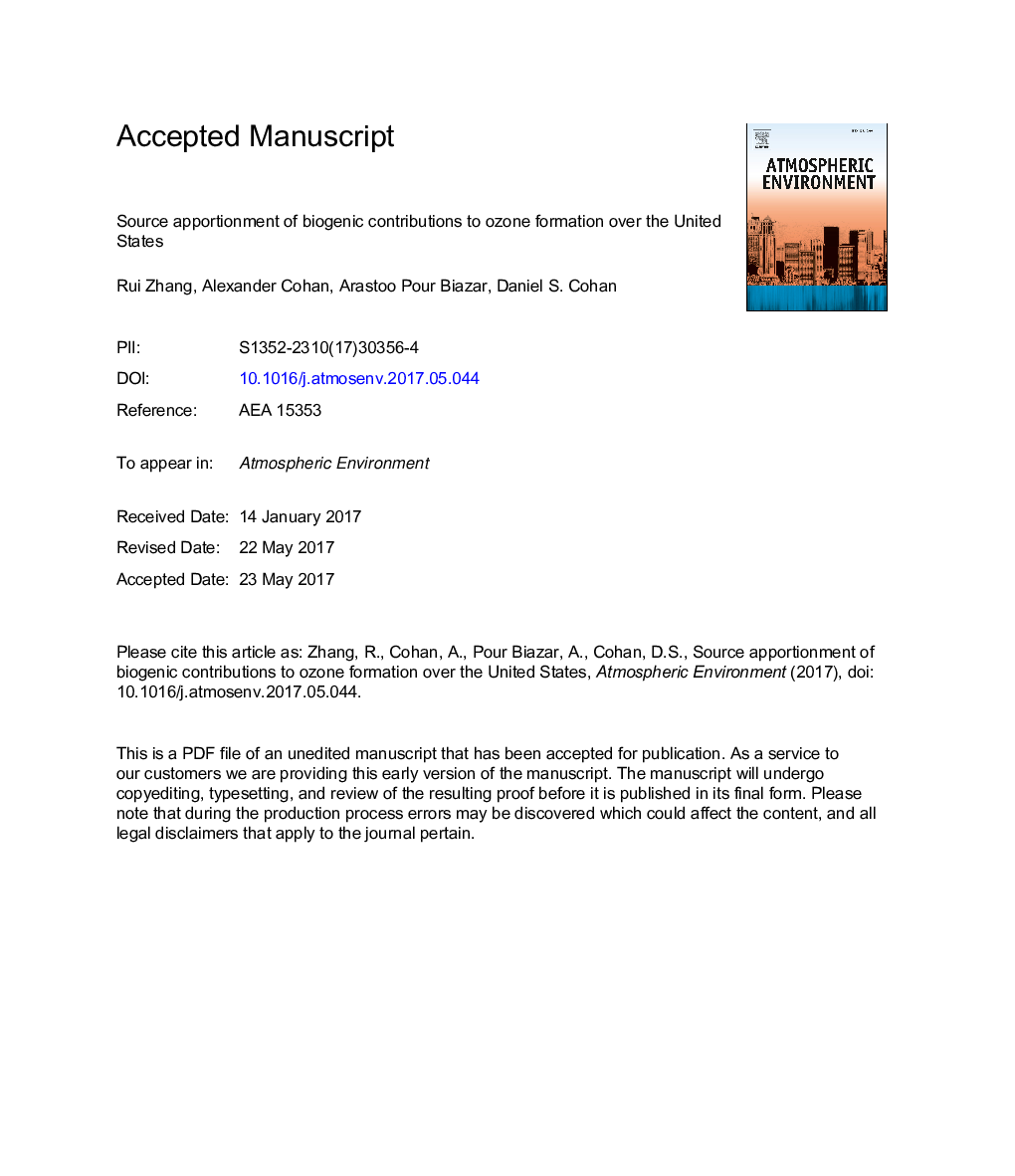| کد مقاله | کد نشریه | سال انتشار | مقاله انگلیسی | نسخه تمام متن |
|---|---|---|---|---|
| 5753108 | 1620310 | 2017 | 38 صفحه PDF | دانلود رایگان |
عنوان انگلیسی مقاله ISI
Source apportionment of biogenic contributions to ozone formation over the United States
ترجمه فارسی عنوان
تقسیم منابع کمک های زیست محیطی به تشکیل اوزون در ایالات متحده
دانلود مقاله + سفارش ترجمه
دانلود مقاله ISI انگلیسی
رایگان برای ایرانیان
کلمات کلیدی
موضوعات مرتبط
مهندسی و علوم پایه
علوم زمین و سیارات
علم هواشناسی
چکیده انگلیسی
Vegetation is the leading emitter of volatile organic compounds (VOC), a key ingredient for ozone formation. The contribution of biogenic VOC (BVOC) emissions to regional ozone formation needs better quantification so that air quality regulators can effectively design emission control strategies. One of the key uncertainties for modeling BVOC emissions comes from the estimation of photosynthetically active radiation (PAR) reaching canopy. Satellite insolation retrieval data provide an alternative to prognostic meteorological models for representing the spatial and temporal variations of PAR. In this study, biogenic emission estimates generated with the MEGAN and BEIS biogenic emissions models using satellite or prognostic PAR are used to examine the contribution of BVOC to ozone in the United States. The Comprehensive Air Quality Model with Extensions (CAMx) is applied with Ozone Source Apportionment Technology (OSAT) and brute force zero-out sensitivity runs to quantify the biogenic contributions to ozone formation during May through September 2011. The satellite PAR retrievals are on average lower than modeled PAR and exhibit better agreement with SCAN and SURFRAD network measurements. Using satellite retrievals instead of modeled PAR reduces BEIS and MEGAN estimates of isoprene by an average of 3%-4% and 9%-12%, respectively. The simulations still overestimate observed ground-level isoprene concentrations by a factor of 1.1 for BEIS and 2.6 for MEGAN. The spatial pattern of biogenic ozone contribution diagnosed from OSAT differs from the brute force zero-out sensitivity results, with the former more smoothly distributed and the latter exhibiting peak impacts near metropolitan regions with intense anthropogenic NOx emissions. OSAT tends to apportion less ozone to biogenics as BVOC emissions increase, since that shifts marginal ozone formation toward more NOx-limited conditions. By contrast, zero-out source apportionment of ozone to biogenics increases with BVOC emissions. OSAT simulations with BEIS show that BVOCs typically contribute 10-19% to regional ozone concentrations at nonattainment receptor sites during episode days.
ناشر
Database: Elsevier - ScienceDirect (ساینس دایرکت)
Journal: Atmospheric Environment - Volume 164, September 2017, Pages 8-19
Journal: Atmospheric Environment - Volume 164, September 2017, Pages 8-19
نویسندگان
Rui Zhang, Alexander Cohan, Arastoo Pour Biazar, Daniel S. Cohan,
